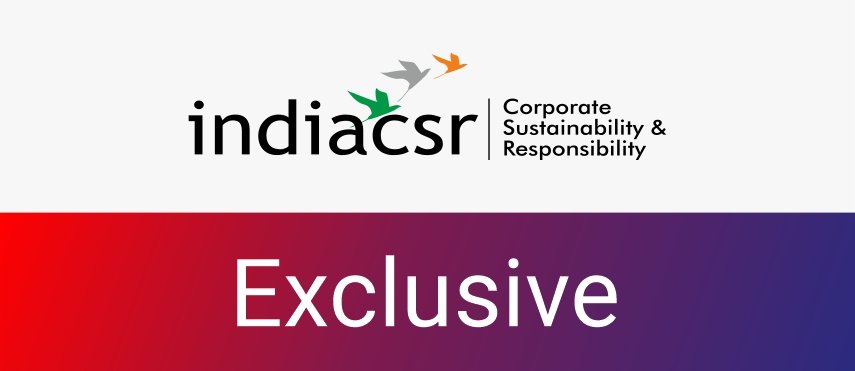Synopsis
Beneficiary identification is a critical aspect of CSR management. By strategically identifying beneficiaries, companies can ensure that their CSR programs address real community needs, align with their corporate mission and competencies, and generate meaningful, lasting impact. As CSR continues to evolve, a strategic, data-driven approach to identifying beneficiaries will be crucial to realizing the full potential of these initiatives.
Introduction
Corporate Social Responsibility (CSR) has been institutionalized in India since the introduction of the Companies Act 2013, which made it mandatory for large enterprises to spend 2% of their average net profits on CSR activities. As companies navigate the complexities of CSR management in India, they are increasingly realizing the value of beneficiary data in understanding and effectively addressing societal issues.
Corporate Social Responsibility (CSR) has grown into a key component of modern business practices, driven by the rising demand from consumers, investors, and employees for organizations to play a more active role in addressing global issues. By investing in CSR programs, corporations can demonstrate their commitment to these causes. However, the effectiveness of these initiatives often hinges on the careful use of beneficiary data.
Understanding CSR Management in India
In India, CSR is not merely a voluntary commitment but a legal obligation for certain corporations. Companies with a net worth of INR 500 crores, turnover of INR 1000 crores, or net profit of INR 5 crores must allocate funds for CSR activities. The government has outlined permissible activities that encompass a wide range of sectors, from education and health to poverty alleviation and environmental sustainability. Companies are required to set up a CSR committee to devise and implement their CSR policy.
Defining CSR Beneficiaries
CSR beneficiaries are the individuals, groups, or environments that are positively impacted by a company’s CSR activities. These may include local communities, employees, underprivileged groups, or ecosystems that are the focus of conservation efforts. The exact nature of beneficiaries is contingent on the company’s CSR focus areas, which might include education, health, environment, poverty reduction, or other social issues.
Understanding Beneficiary Identification: A Strategic Approach
Identifying CSR beneficiaries is a critical step that requires strategic thinking. Companies must consider their own corporate mission, industry, stakeholders’ expectations, and the social and environmental context. The goal is to ensure that the CSR initiatives align with the needs of the community, resonate with the company’s objectives, and ultimately generate meaningful impact.
A Systematic Approach to Beneficiary Identification
Needs Assessment: Companies often start by conducting a needs assessment, which involves collecting and analyzing data about the community or environment they intend to serve. This data can reveal key issues and challenges that the CSR initiatives should address.
Stakeholder Engagement: Engaging with stakeholders, such as community leaders, NGOs, local government bodies, and employees, can provide valuable insights into the needs and expectations of potential beneficiaries.
Alignment with Company Goals and Competencies: The company’s specific goals and areas of expertise should guide the identification of beneficiaries. For example, a technology company might focus its CSR efforts on improving digital literacy, while a healthcare company might target communities lacking adequate healthcare facilities.
Beneficiary Identification in Practice: An Example
Let’s consider a hypothetical example of a pharmaceutical company that wants to implement a CSR program in rural India. The company might begin by conducting a needs assessment, revealing a high prevalence of certain diseases and a lack of access to essential medicines in these communities. Stakeholder engagement could corroborate these findings and bring to light additional challenges, such as a lack of health literacy. Given the company’s expertise in healthcare, these rural communities would be an appropriate choice as CSR beneficiaries. The company could then develop initiatives to provide medical supplies, improve health literacy, or train local healthcare workers.
The Power of Beneficiary Data in Unveiling Societal Issues
Beneficiary data plays an integral role in identifying and understanding the societal issues that companies need to address through their CSR activities. For instance, data on literacy rates, gender equality indicators, or the prevalence of certain diseases can provide a clear picture of the challenges a community is facing.
Case Study: CSR in the Health Sector
Consider a pharmaceutical company located in Hyderabad that wants to focus its CSR efforts on health issues. By analyzing beneficiary data, such as the prevalence and spread of diseases, availability and accessibility of health services, and health outcomes in different regions, the company can identify key health challenges in the areas where it operates or hopes to make an impact. This data could reveal, for instance, that rural areas in Telangana are grappling with high rates of maternal mortality, prompting the company to invest in initiatives aimed at improving maternal health.
Guiding CSR Strategies and Improving Impact
Beneficiary data doesn’t just inform companies about societal issues; it also helps them craft targeted CSR strategies and measure their impact. The Hyderabad-based company, guided by the insights from its beneficiary data, can establish mobile clinics, offer free prenatal care, or fund training for midwives in rural areas. Over time, data on maternal mortality rates and the health status of mothers and infants can help assess the effectiveness of these initiatives and inform future strategies.
Boosting Stakeholder Confidence and Trust
Companies that use beneficiary data to shape their CSR initiatives and transparently share this data with stakeholders can significantly enhance their reputation and foster trust. This transparency can lead to greater stakeholder engagement, as communities, local organizations, and government entities can provide valuable feedback and collaborate on CSR activities.
Here are seven reasons why beneficiary data is so important in managing CSR programs:
1. Ensuring Relevance of Initiatives
Beneficiary data helps companies understand the real needs and priorities of their target communities, thereby ensuring that their CSR initiatives are relevant and impactful. For example, a corporation intending to enhance educational opportunities in a rural area may use data to determine if the community requires more school infrastructure or teacher training programs.
2. Enhancing Efficiency and Effectiveness
With solid beneficiary data, companies can measure the performance and impact of their CSR initiatives. By examining the change in the living standards of beneficiaries or the improvement in specific indicators like health or education, companies can gauge the effectiveness of their programs and make necessary adjustments.
3. Facilitating Better Planning and Decision Making
Comprehensive and accurate beneficiary data assists in planning future CSR initiatives. It can reveal patterns and trends that guide strategic decision-making, ensuring resources are invested wisely. For instance, data might indicate that a company’s health-focused initiatives are better received in certain regions, guiding the decision to concentrate efforts there.
4. Ensuring Transparency and Accountability
Beneficiary data aids in maintaining transparency and accountability, a key expectation from stakeholders in any CSR initiative. By tracking and publicly sharing data about who benefits from these programs and how, companies can build trust and strengthen relationships with stakeholders.
5. Enabling Stakeholder Engagement
The collection and dissemination of beneficiary data also open avenues for stakeholders to engage in CSR initiatives. This data allows community members, local organizations, and even governments to provide input and collaborate, ultimately driving better outcomes.
6. Compliance with Regulatory Requirements
In many jurisdictions, businesses are required by law to disclose the impact of their CSR initiatives. Accurate beneficiary data ensures compliance with these regulations, reducing legal risks and reinforcing a company’s reputation for responsible behavior.
7. Fostering Long-Term Sustainability
Lastly, beneficiary data promotes the long-term sustainability of CSR programs. By consistently evaluating and using this data to refine strategies, companies can ensure their initiatives remain relevant and impactful over time. For example, a company supporting renewable energy projects might use beneficiary data to gauge community adoption rates and adjust its approach accordingly.
In conclusion, beneficiary data plays a pivotal role in managing CSR programs effectively. Companies that prioritize data collection, analysis, and utilization will not only meet their social obligations more effectively but also foster a greater level of trust among their stakeholders, ultimately enhancing their brand value and societal impact.



























